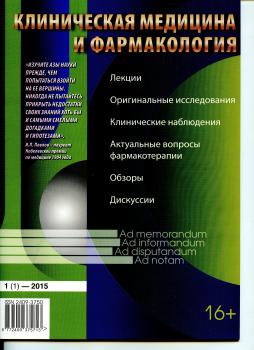Tula, Tula, Russian Federation
Cardiology (from the Greek. καρδία-heart and λογος-study) is an extensive branch of medicine that deals with the study of the human cardiovascular system. Cardiology is believed to have originated in Ancient Egypt around 3000 BC. Hippocrates first describes the structure of the heart as a muscular organ. Harvey was the first to experimentally prove the existence of blood circulation. Andreas Vesalius created the basic prerequisites for the subsequent discovery of pulmonary circulation. Malpighi published the results of observations on the structure of the lung, for the first time gave a description of capillary vessels. For the first time, the Italian researcher Gaspar Azeli reported on lymphatic vessels and their connection with blood vessels. Purkinje published research on specific muscle fibers that conduct arousal through the heart (Purkinje fibers), which initiated the study of its conducting system. Thanks to all these fundamental discoveries, by the beginning of the XIX century, cardiology had become an independent branch of medicine, which has its own methods of diagnosis and treatment of diseases.
cardiology, blood circulation, heart, anatomy, physiology, history
1. E. N. Gricak "Populyarnaya istoriya mediciny", 2003 g.
2. T. S. Sorokina "Istoriya mediciny" 2007 g.
3. P. E. Zabludovskiy, G. R. Kryuchok, M. K. Kuz'min, M. M. Levit "Istoriya mediciny" 1981 g.
4. G. A. Golubkova Atlas anatomii cheloveka. Klub semeynogo dosuga, 2010.
5. Kvetnoy I. M. "Ot Gippokrata do H'yumtrena", 2001 g.
6. Yu. Fedorova, E. Troyak, E. Krylova "Istoriya otkrytiya roli serdca i sistemy krovoobrascheniya", № 07/2004 gazety "Biologiya"
7. Chazov E.I. «Zhizn' prozhit' - ne pole pereyti» - Podmoskov'e, 2014 g.








